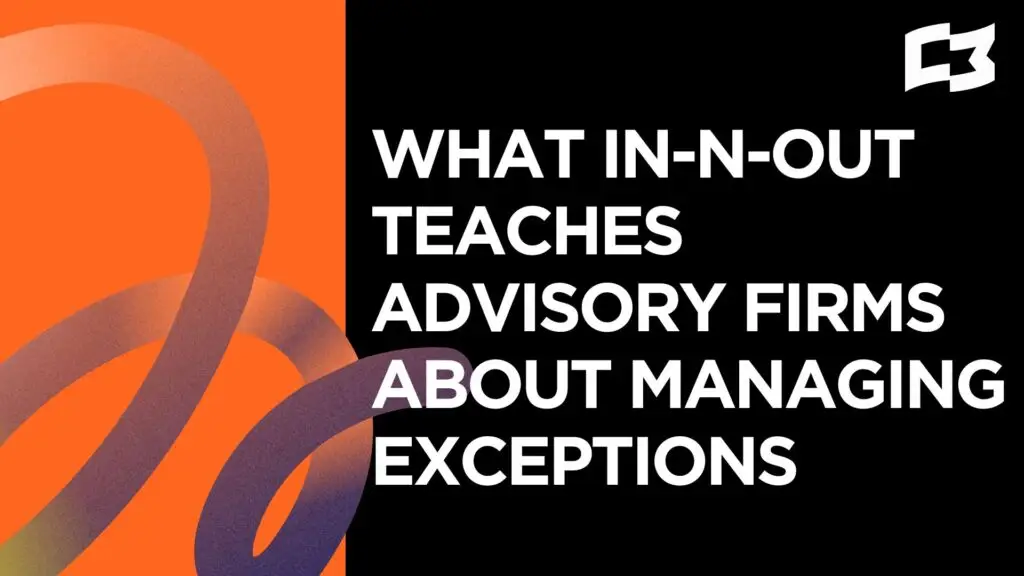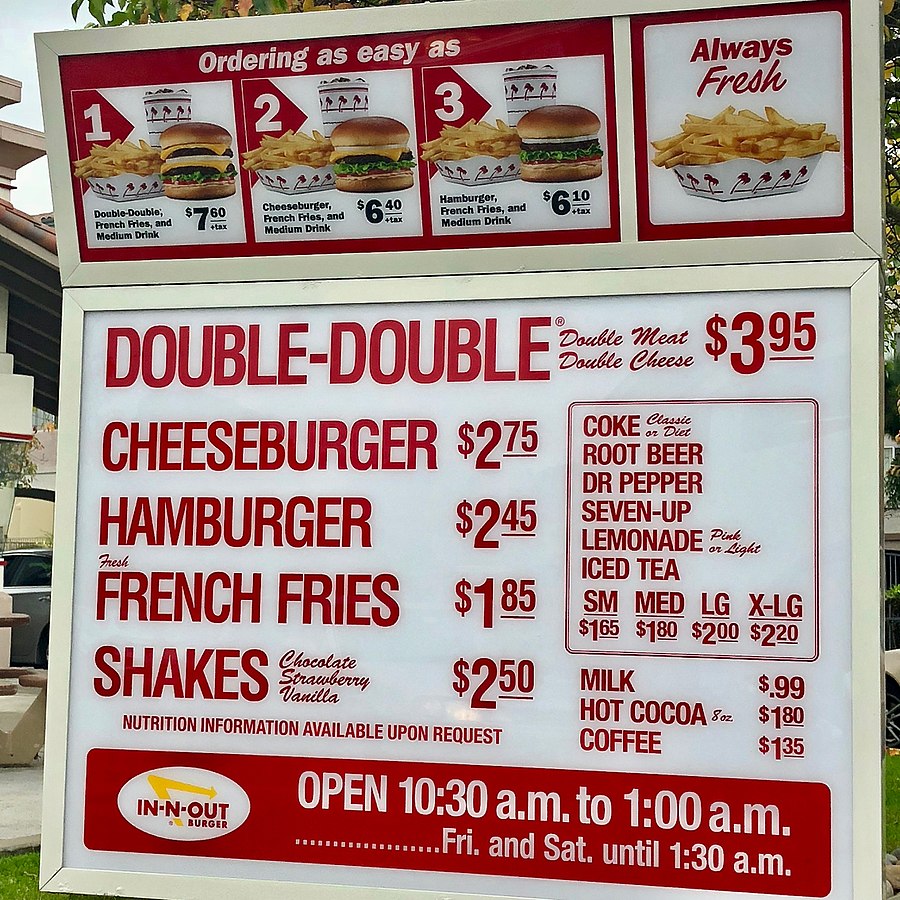What In-N-Out Teaches Advisory Firms About Managing Exceptions

Everyone loves preferential treatment.
Surprisingly, this also includes advisors. 🙂
The first time I saw this in an extreme form, was when I met a firm who allowed every advisor to set up their own unique fee structure for every client.
Everyone was special, and everything was complicated.
In turn, everyone was on edge about every possible nuance.
The amount of work it took to nail every detail to onboard them in the company I worked for was 10x any other firm we were bringing on board. There was no way to scale the work. We had to manually check everything.
Just One More Thing
While that was a unique circumstance, most firms have at least some advisors with nuanced history, continuity requirements, and expectations about keeping some clients ‘special.’
At the C-Level, leaders were often battling with how to preserve their advisor’s culture of white-glove behaviors without wrecking the ability of the operations teams to work efficiently. They wanted more uniformity and scalability, while still providing the experience of preferential treatment to their advisors and clients.
So, how do we cross the chasm on all the exceptions that likely exist in our businesses?
Here are a few ideas.
Crossing the Chasm on Operational Exception Management
1. Embrace Your Pareto
If you can get to a place where 80% of your business runs uniformly, you will run a far more scalable business.
To be clear, 80/20 is a goal, and if you are radically off this mark today, you’re likely struggling on either side – with not enough high end clients who need specific assistance or too many exceptions that keep operations from following best practices. It might be hard to embrace never having completely scalable business practices, but the 20% side of the Pareto is generally the most financially significant segment of an advisory firm.
As you go through your regular monthly or quarter-end audits, start analyzing what percentage of your book is standardized and then find a pathway to move the exceptions into the standard over time. Similarly, analyze how you are serving your 20% through special service offerings and look for opportunities to increase your value to them.
2. Productize Your Process
Many firms really don’t have workflows that they are proud of. It’s very easy to have fragmented processes if you’ve never documented how the work should ideally get done. In that scenario, advisors have no choice but to forge their own path based on what they already know.
First, document all of your preferred workflows. Then, capture the exceptions to the general request. Hopefully you will begin to find that progress can still happen with ease, guarantee that all necessary information is captured and you can use the exception volume to influence how you evolve your processes over time.
Your processes can then be treated as a product within your firm, analyzed and iterated upon regularly — all while monitoring the volume they process.
3. Exception Like In N Out
In-N-Out has a minimalist menu that I happen to love.
As someone who would take In-N-Out over most other burger options, I never feel like the menu’s limit limits my enjoyment. In fact, In N Out’s menu offers a fair amount of diversity if you understand how to access the optionality.
Here’s how I think about it: At the center of In-N-Out is the Double Double. Like Payton Manning, you can step up to the line and call all sorts of audibles once you utter the words “I’ll have a Double Double with ______________”
This is where you can drop your exceptions.
Animal Style, Flying Dutchman, Onion Bun, Protein Style, Road Kill Fries, the list goes on.
Are these exceptions and do they hurt scale? Probably. At least a little bit.
Do they make or break the brand experience? I think so.
You can offer ways to enhance the experience without breaking your model. It just takes a spirit of creativity, a willingness to serve, and a strong dedication to experience – both for your client, your advisors, and your team.
Check out your menu once a year and trim what isn’t working every time you are asked to add something new while still offering just the right number of specialty items to keep your customers happy.
4. Always Improve Your Workflows
There is a lot of power in having workflows that you can continue to improve. If you are stuck or held captive by your workflows today, I’d love to hear how and see if we can help.
Let me know
What’s your go-to order at In-N-Out, or go-to burger alternative?

